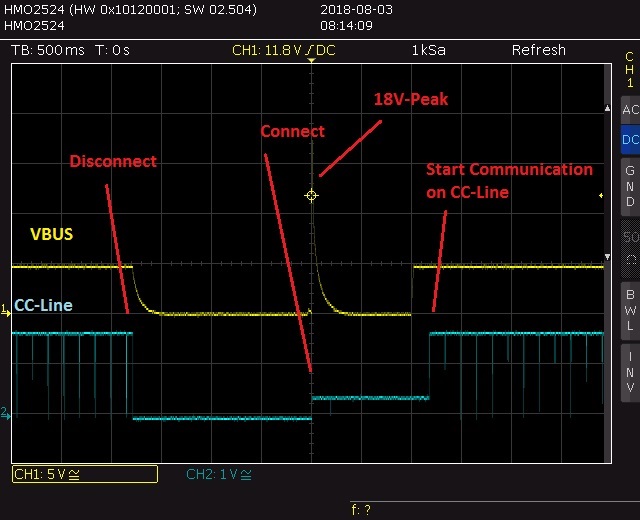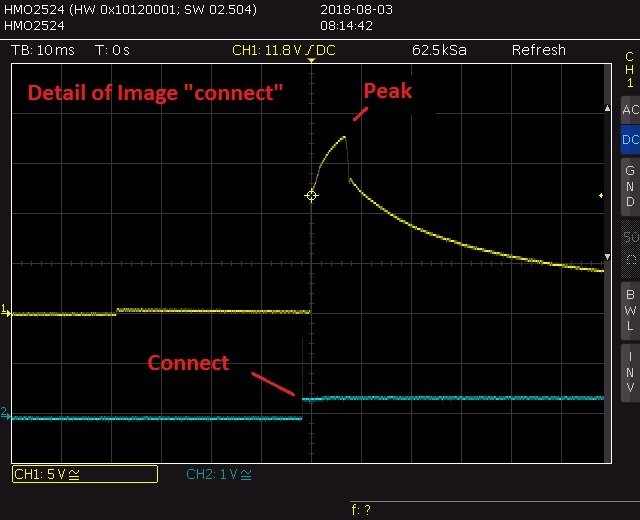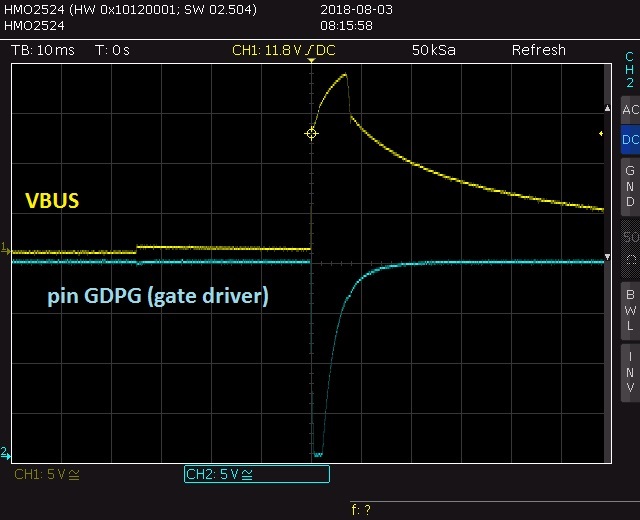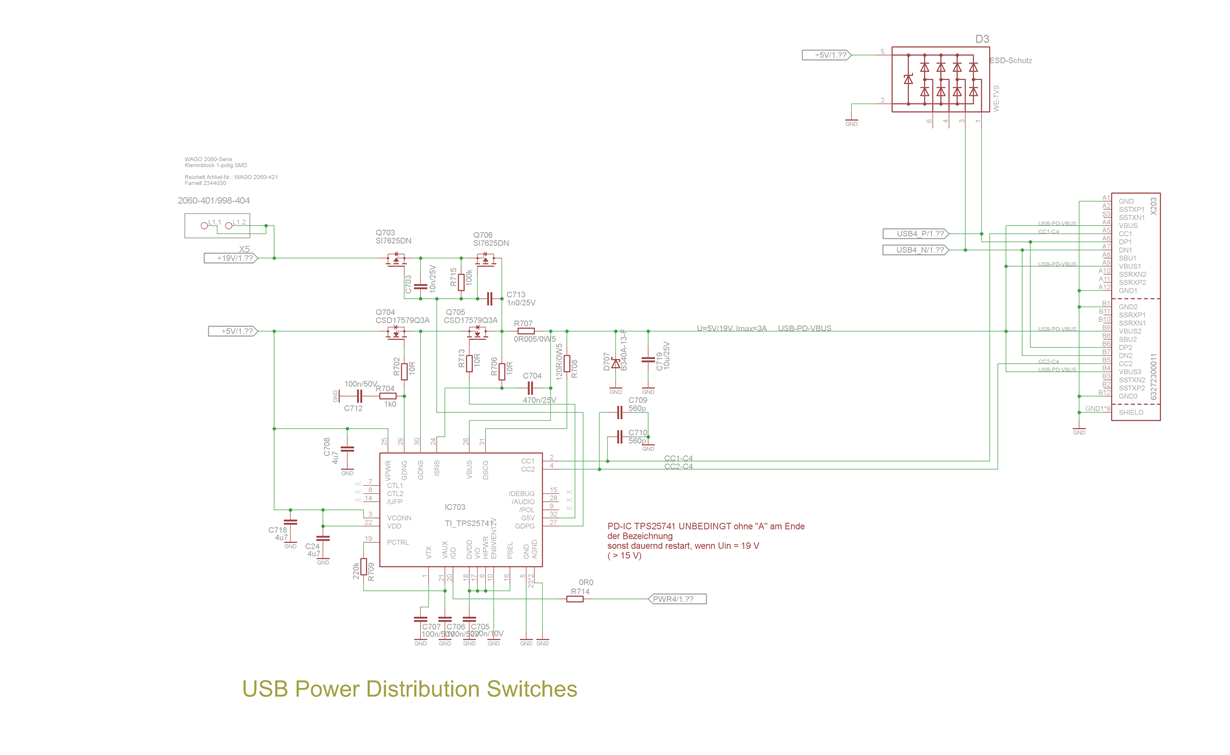We have our own hardware with the circuit as discribed in Typical Application, data sheet §9.2 "A/C Multiplexing Power Source". We only have 20V instead of 12V. When we attach a USB-C device we see a 10ms long 20V pulse. The voltage then decreases to 0V before rising to 5V. We measure at pin GDPG (gate driver of 20V P-FET) an see a short low level pulse (0V) which enables the 20V FETs. This is long before any communication on CC line starts, it is immediately after connecting the device. Same behaviour is when we only simulate a detach / attach by removing the CC-pull down on the slave. When the resistor is reconnected the 20V pulse appiears.
Any idea why we have this fatal behaviour?





